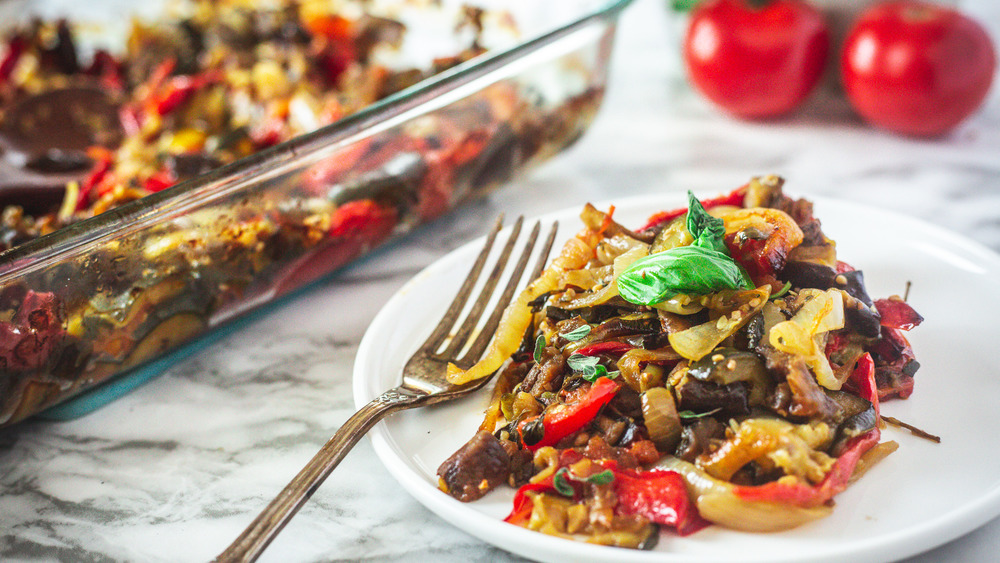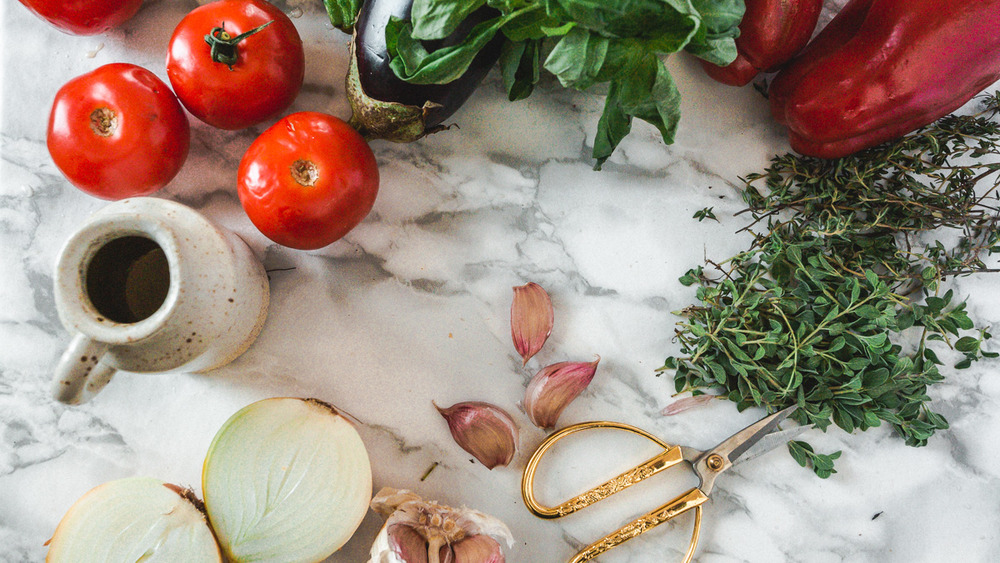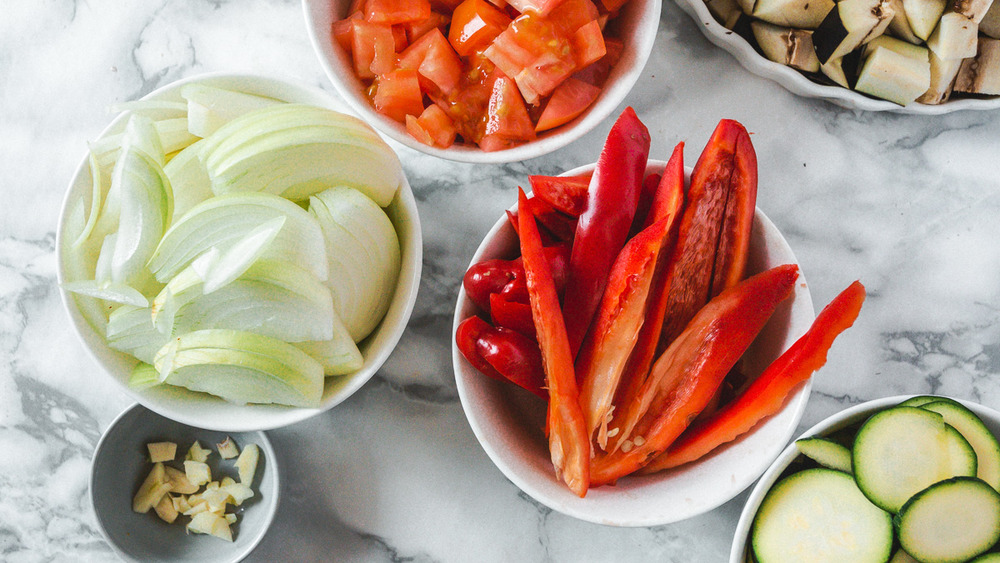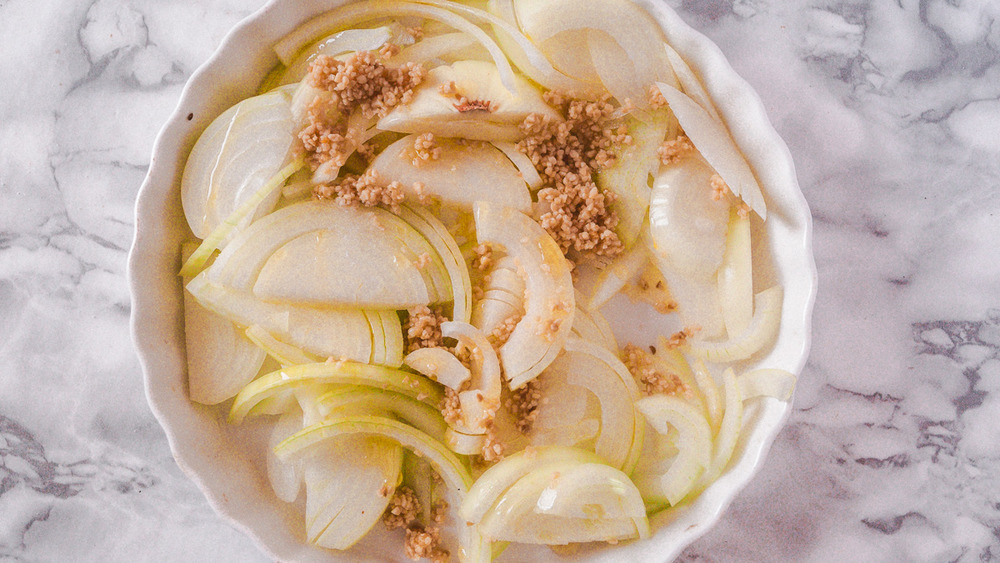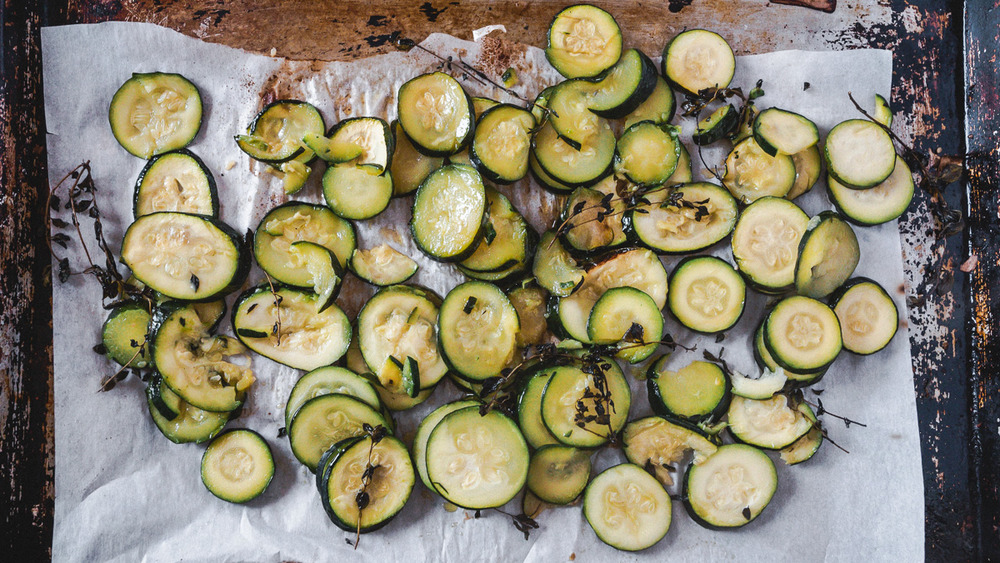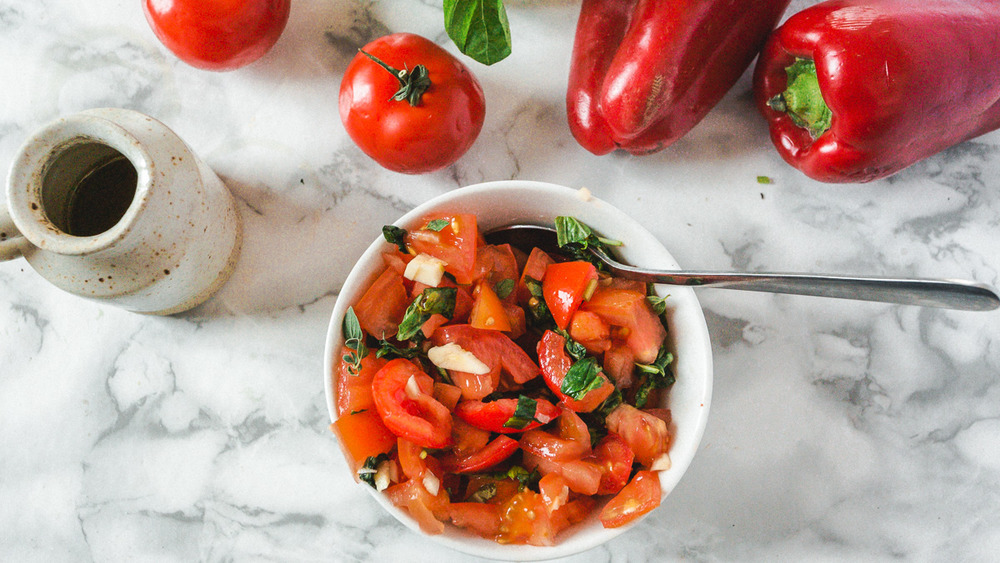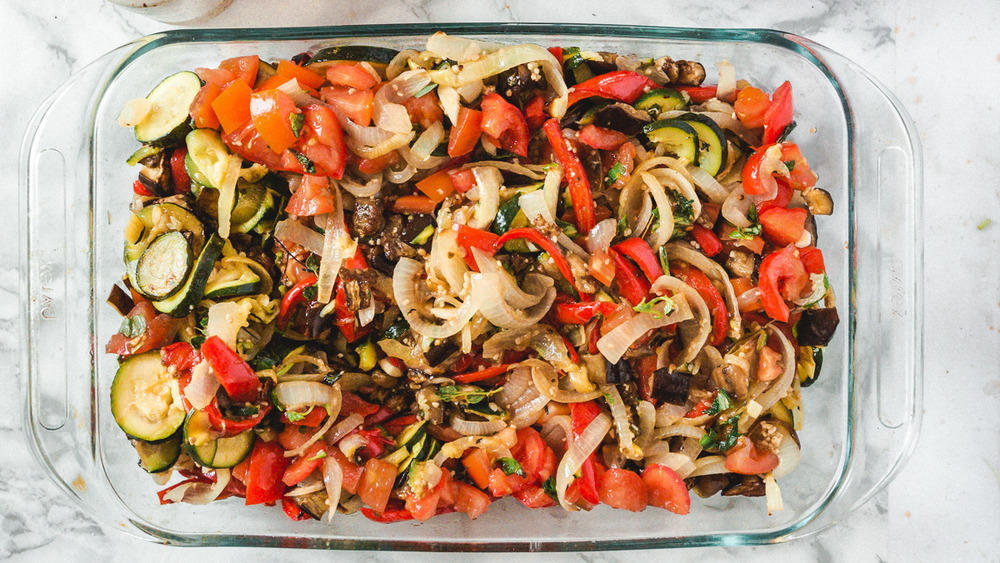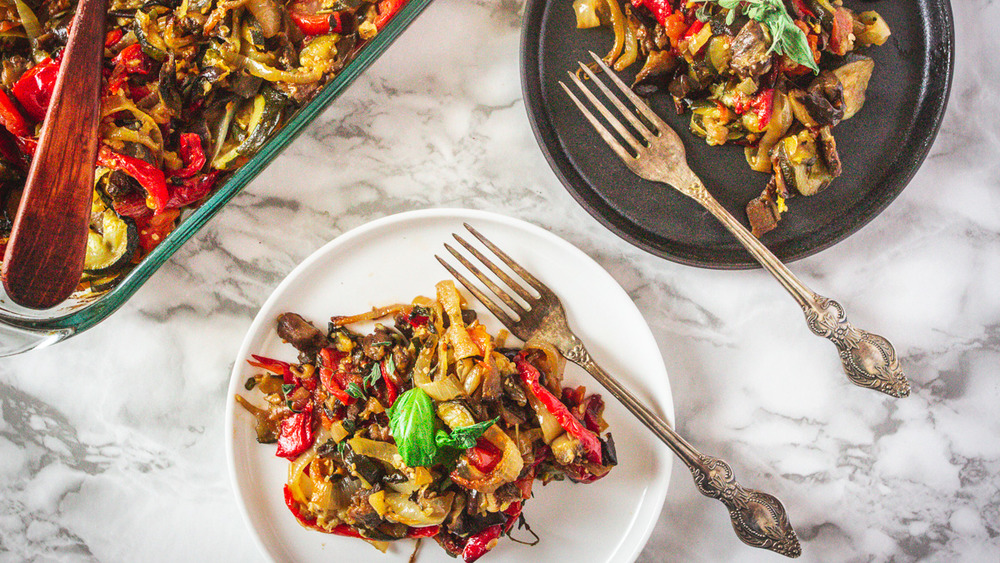Late Summer Ratatouille Recipe
Capture the essence of summer vegetables with the ultimate late summer ratatouille recipe, the kind that will transport you to Provence from the first bite. The secret is in cooking all the vegetables separately and accepting that this is the kind of dish that requires waiting, plus a few bottles of wine.
Ratatouille originated in Nice, the heart of Provence. The original meaning of the word is "a motley stew," and that's exactly what it is: a mix of cooked local vegetables, transformed by heat and oil into something greater than the sum of its parts.
Before it became a movie, ratatouille was the recipe equivalent of the French end-of-summer block party. Imagine all the neighbors getting together, carrying armloads of summer vegetables: taut purple eggplant, shiny red tomatoes, sweet red peppers, and oversized dark green zucchini. Handfuls of fresh oregano and basil, fragrant garlic, and punchy onion are added to the mix, giving the dish a heady fragrance that brings all the boys to the yard.
After a few hours in the oven and a few bottles of wine drunk, the ratatouille is ready for its moment of glory: glistening, slick with oil and tomato juice, aromatic and undeniably sexy. It's the sort of dish you'll want to sop up with a baguette — and share with your loved ones.
Find more recipes from Ksenia Prints at At The Immigrants Table.
Get the oven going and gather your ingredients for this ratatouille
The oven is going to be working overtime on this late summer ratatouille dish, so give it a big hug and set it to 350 degrees Fahrenheit. Don't be tempted to set it on higher to speed up the process, as it'll result in burnt vegetables.
You'll also want to prep your baking dishes by covering them with parchment. Pick four rimmed baking dishes that can fit into your oven all at the same time, or you'll be cooking in batches. Next, gather your ingredients. This is a vegetable-forward dish with no additional sauce to cover up any problems, so try to get the freshest, best looking vegetables you can find.
Ratatouille is traditionally based on vegetables that are abundant in Provence in late summer. For this recipe, you'll need eggplant, zucchini, sweet bell peppers and tomatoes. Garlic, onion, oregano, and basil kick up the flavor of this dish. And of course, you'll need some good extra virgin olive oil.
All this being said, it's a forgiving dish, so if you're short on one vegetable or can't get fresh oregano, no big deal. Dry herbs are totally fine here, and you can omit or subtract veggies as needed.
Get chopping on all those beautiful summer vegetables for your late summer ratatouille
This is basically the only "active" part of this late summer ratatouille dish, and we're getting it out of the way early! That's what we call a lazy dish.
To extract the maximum flavor, each vegetable requires a different cut. Finely mince the garlic cloves. Cut the onion in half through the root, and then slice them into thin crescent moon slices. Dice eggplant into 1-inch cubes (eggplant slices tend to burn faster and don't soak up the sauce as much). The peppers are sliced into ½-inch strips, while the zucchini is the easiest to prep: just slice it into thin rounds.
The tomatoes, which will be added in the last stage of the cooking, need to be diced the same size as the eggplant.
Finally, trim your herbs by mincing basil and removing oregano and thyme leaves from the stems. Take care doing this — trust us, no one wants to be biting into woodsy stems as they're enjoying this delectable ratatouille!
Arrange your vegetables in separate trays for the smoothest and tastiest ratatouille
Cooking the vegetables for this late summer ratatouille separately is — quite literally — the "secret sauce" of this dish. The key here is not to overcrowd your pans, or you'll end up with mush (tasty mush, but mush nonetheless).
Transfer your eggplant, zucchini, bell peppers, and onion each unto their own separate prepared baking dish. If you don't have enough baking sheets, don't worry — cake pans or Pyrex dishes all work just fine in our experience! You want dishes with some rims so the sauce doesn't spill.
Add half the minced garlic to the onion pan, and mix well. Distribute leaves from the rosemary and thyme equally amongst all the pans. Season each vegetable batch lightly with salt, pepper, and olive oil, and mix up all that goodness.
Bake your vegetables for your ratatouille
Now is the time to crack open your (first) bottle of wine, as the veggies are going to be here a while.
Place all the pans in the oven, or work in batches if you don't have enough room. Cook until vegetables are very tender and lightly browned at the edges, using these timelines as a guide: peppers for 40 minutes, eggplant for 45 minutes, zucchini for 45 minutes, and 50 minutes for the onions. It's okay to give or take five minutes here or there, as the vegetables will cook further in the next stage.
You'll want to stir the contents of the pans halfway through the cooking to ensure everything bakes evenly.
Flavor your tomato sauce with garlic and basil for your ratatouille
While the vegetables for your late summer ratatouille are cooking, prepare the tomatoes that will serve as sauce for the dish. What you're doing is essentially preparing a raw "salsa" that will mix with the cooked vegetable juices, herbs, and olive oil and produce that awesome Provencal flavor!
Making this sauce couldn't be simpler. Mix the tomatoes you diced prior with the remaining garlic clove. Add in the finely minced basil. Season liberally with salt and pepper, and taste to ensure you like the balance of flavor. C'est tout!
Mix all the vegetables together for your ratatouille and send them in for one final round in the oven
Once the vegetables for your late summer ratatouille are done cooking, combine them all in one baking sheet or a large baking dish. Notice that they shrink while cooking, so they won't need nearly as much room. Plus, this time it's perfectly fine to layer them — in fact, it's even a requirement for extra tasty ratatouille!
Add the tomato mixture you prepared to the vegetables, and toss well. Add the remaining olive oil, and don't worry if it looks like a lot — it's where all the flavor is! Season with pepper to taste. Mix well to ensure even distribution. You got some wine left? Good. Because now there's more cooking (and waiting).
Cook the combined vegetables for at least 1 hour, stirring halfway through, until they are very tender and browned in spots.
Serve this ratatouille with a crusty baguette or pasta for a complete meal
Congratulations! Your late summer ratatouille is done cooking, and you should be down at least one bottle of wine. This means everything is going truly à la française.
When it comes out of the oven, late-summer ratatouille should like a languid, tangled mess of fully cooked veggies, tender and browned around the edges. It should taste pretty saucy, tomatoey and a bit acidic, though you may have to play with the balance of salt and pepper.
You can eat your ratatouille right away, as we often do — it's hard to resist the smell of freshly cooked ratatouille! For a complete meal, serve it with a crusty baguette to soak up all that delicious sauce, or even atop of some pasta for a pan-European meal.
Ratatouille recipe directions
Capture the essence of summer vegetables with the ultimate ratatouille recipe, the kind that will transport you to Provence from the first bite.
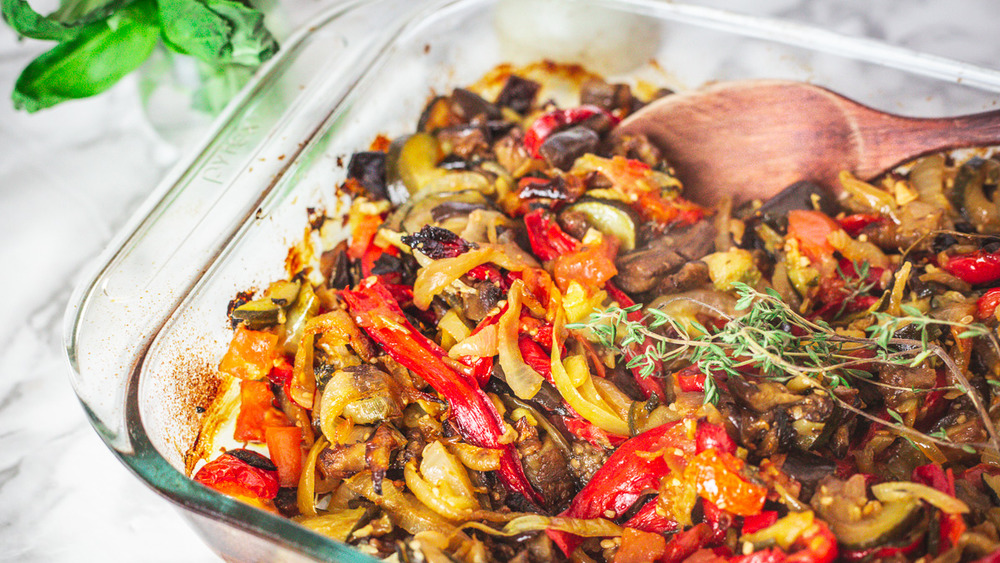
Ingredients
- 4 garlic cloves
- 1 onion
- 3 medium zucchini
- 2 medium eggplant
- 3 red bell peppers
- 8 sprigs fresh thyme (or 2 tablespoon dry)
- 8 sprigs fresh oregano (or 2 tablespoon dry)
- 12 tablespoons olive oil
- 3 tomatoes
- 8 sprigs fresh basil (or 2 tablespoon dry)
- 2 teaspoons fine sea salt, or as needed
- 1 teaspoon freshly ground black pepper, or as needed
Directions
- Preheat oven to 350 degrees. Prepare 4 rimmed baking sheets or other rimmed baking dishes by covering the bottom of each with parchment paper. Make sure your oven can fit all of them at once, or you'll have to bake in batches.
- Prepare and cut your vegetables: finely mince 4 garlic cloves. Cut onion in half through the root, and then slice into thin crescent moon slices. Dice eggplant into 1-inch cubes. Slice peppers into strips. Slice zucchini into rounds. Remove oregano and thyme leaves from stems. Dice tomatoes into 1-inch cubes. Mince basil finely.
- Transfer eggplant, zucchini, bell peppers, and onion each onto their own separate prepared baking dish. Add half the garlic to the onion pan, and mix well. Distribute leaves from rosemary and thyme equally amongst all the pans. Season each vegetable batch lightly with salt and pepper. Drizzle 2 tablespoons olive oil on each of the pans. Mix well to ensure even distribution.
- Place all the pans in the oven (or work in batches). Cook until vegetables are very tender and lightly browned at the edges, using these timelines as guides: peppers for 40 minutes, eggplant for 45 minutes, zucchini for 45 minutes, and 50 minutes for the onions. Shake or stir the pans halfway through, ensuring even cooking.
- While the vegetables are cooking, prepare tomatoes. Mix diced tomatoes with remaining garlic and finely minced basil. Season liberally with salt.
- Once vegetables are done cooking, combine them all in one baking sheet or a large baking dish. Add tomato mixture. Toss well. Add remaining olive oil. Season with pepper to taste. Mix well to ensure even distribution. Cook at least 1 hour, stirring halfway through, until vegetables are very tender and browned in spots. Taste and correct seasonings.
- This late summer ratatouille will keep in fridge for up to 5 days. It can be served hot or cold.
Nutrition
| Calories per Serving | 266 |
| Total Fat | 21.1 g |
| Saturated Fat | 3.0 g |
| Trans Fat | 0.0 g |
| Cholesterol | 0.0 mg |
| Total Carbohydrates | 19.1 g |
| Dietary Fiber | 8.0 g |
| Total Sugars | 10.5 g |
| Sodium | 596.3 mg |
| Protein | 3.8 g |
